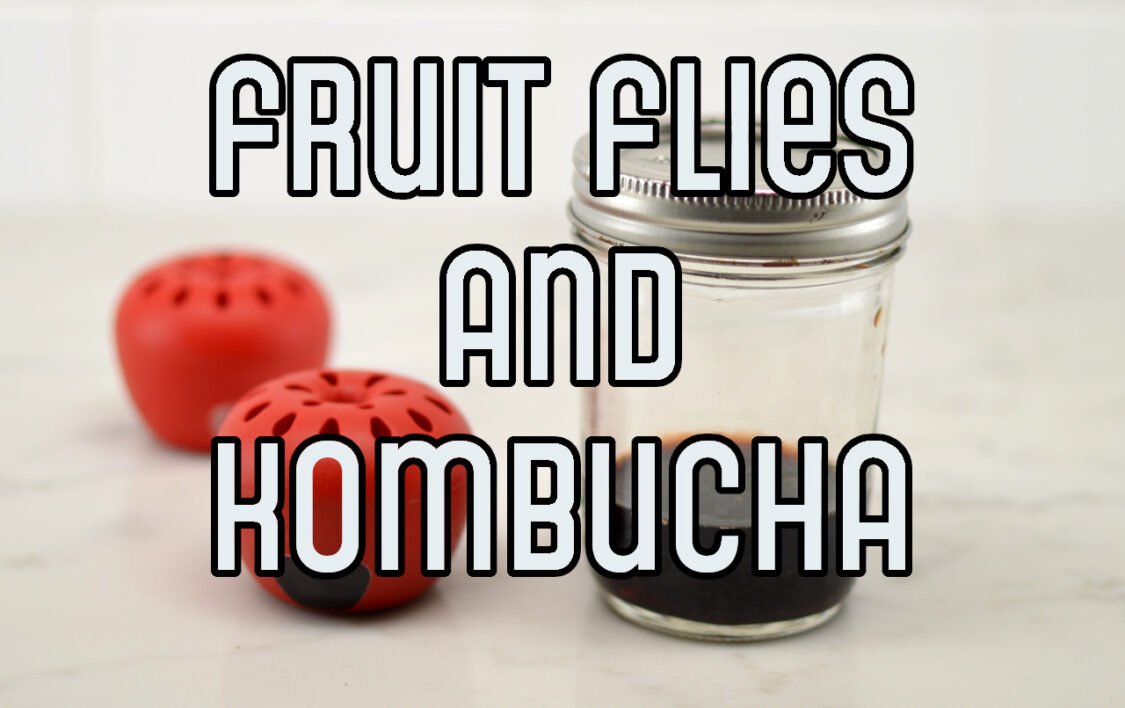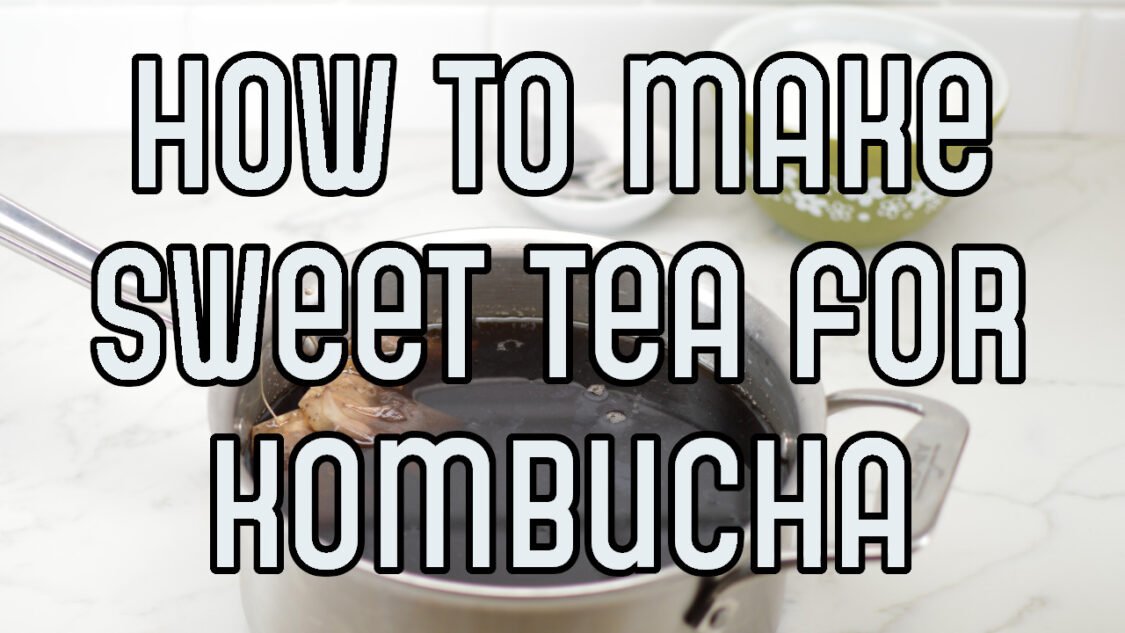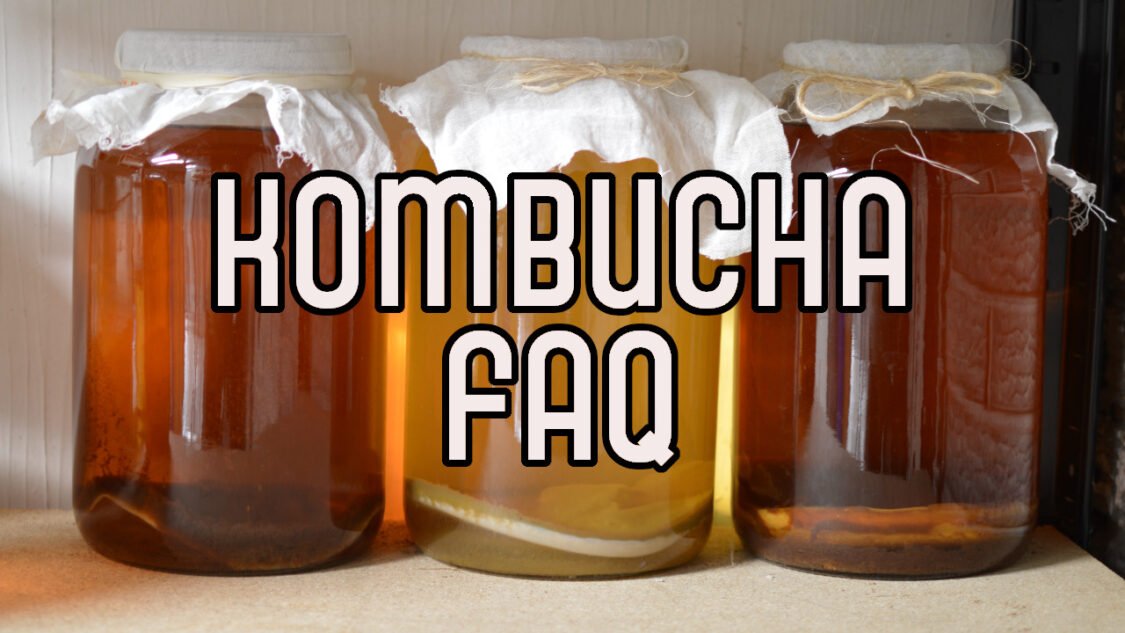Is my kombucha moldy?
Mold is one of the most common fears among kombucha brewers. When checking your fermentation and see unusual looking spots or film on top or on your SCOBY and wonder: Is that mold on my kombucha?
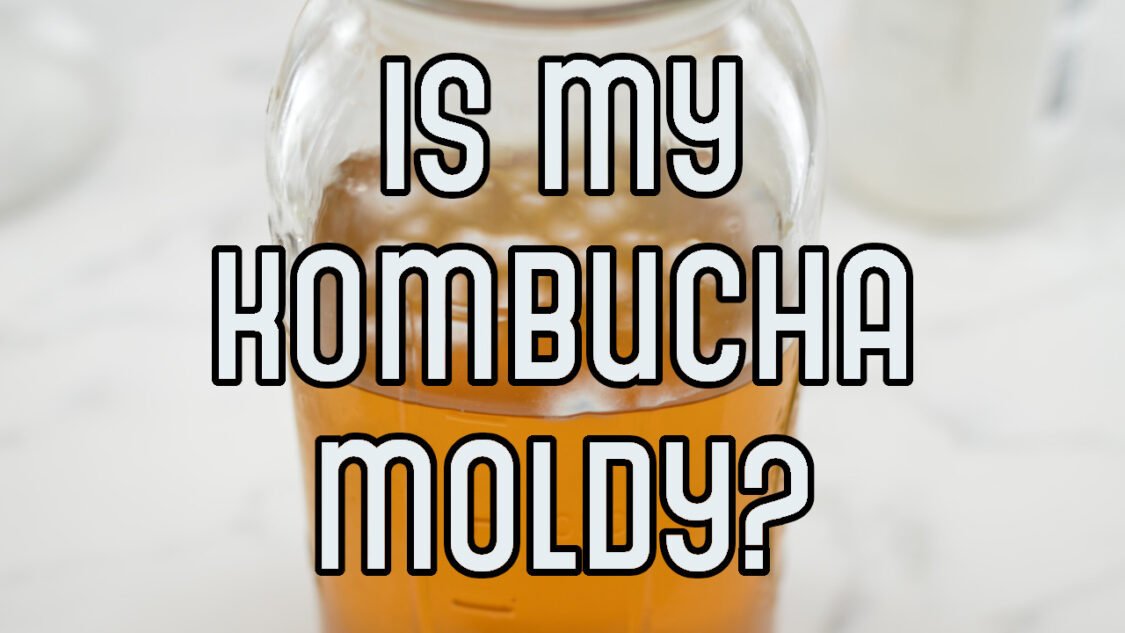
What is Kombucha Mold?
Kombucha mold is an overgrowth multi-cellular fungus that creates a connected network of of filaments which are considered a single organism.
Yeast are similar but grow as single cells so a single mold is essentially yeast, an integral player in production of great kombucha.
Kombucha mold is nothing to be afraid of since the types of mold that commonly infect kombucha are the same as ones you would find on bread or fruit or other items undergoing decay.
The mold in kombucha is not any more dangerous or “poisonous” than any common mold; however, it is not safe to drink kombucha with mold and (beside the moldy taste) may cause an allergic reaction in some people.
What does Kombucha Mold look like?
Almost all mold in kombucha has the following characteristics:
- Kombucha mold appears blue, black, green, or white/tan
- Very dry and/or fuzzy, almost like cotton
- Mold on kombucha grows in circular patterns and shapes with edges looking “fuzzy” or “veiny”
- The mold is on top of the kombucha – mold cannot grow beneath the surface of the kombucha. Often the mold is on the kombucha SCOBY
- Looks identical to molds you find on stale foods such as bread or fruit
Kombucha Mold Pictures
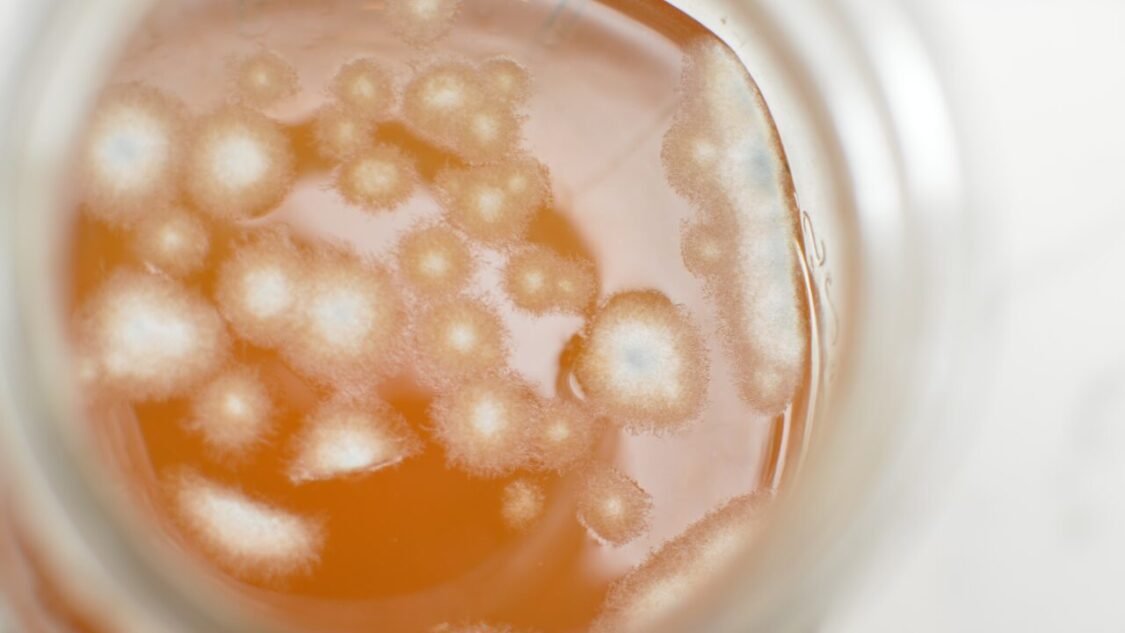
White and green mold on kombucha. note the fuzzy appearance
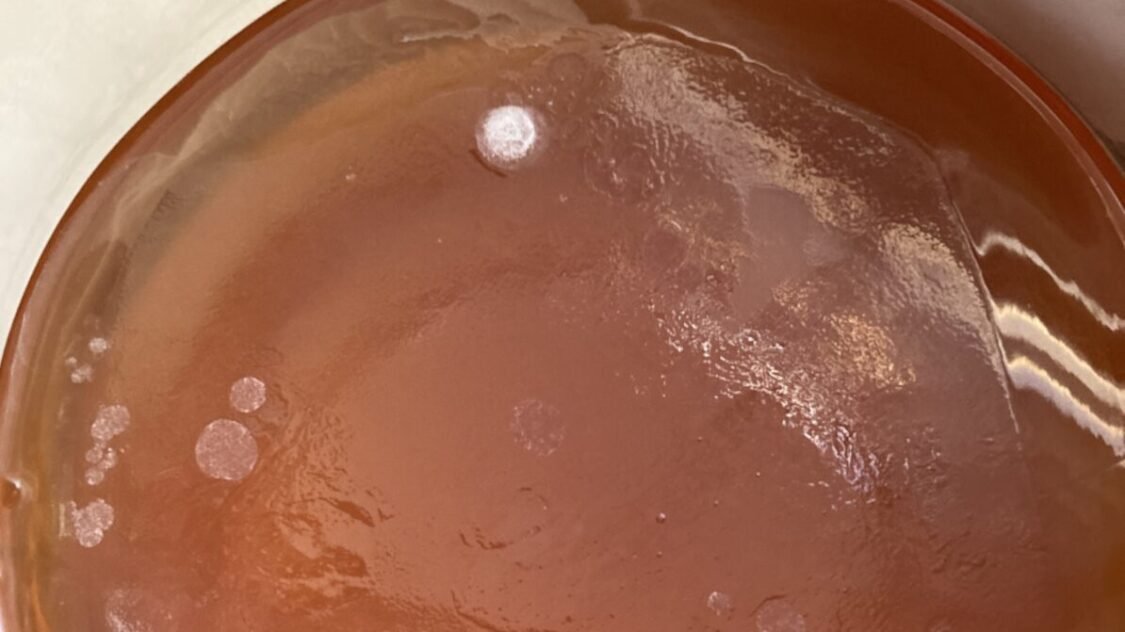
New mold forming on kombucha. Note the regular shape

Fuzzy looking mold in kombucha
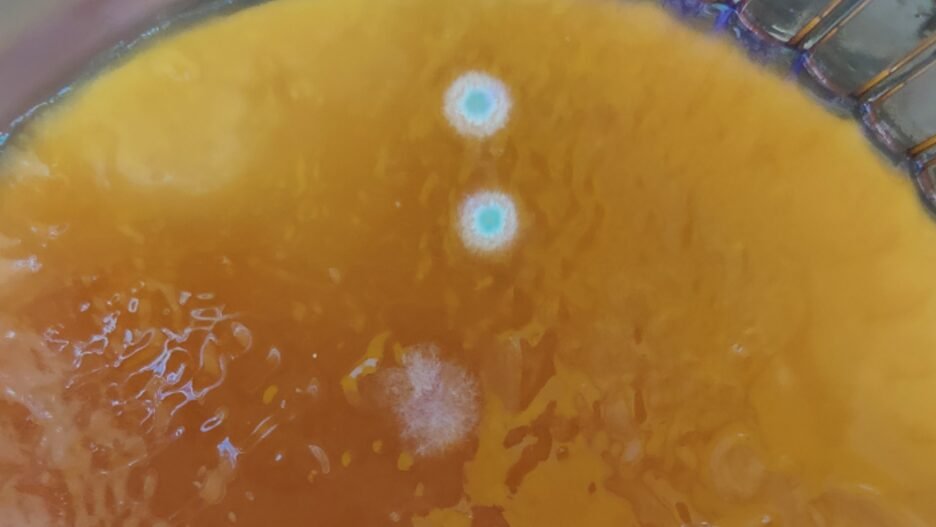
Regular shaped green mold on SCOBY
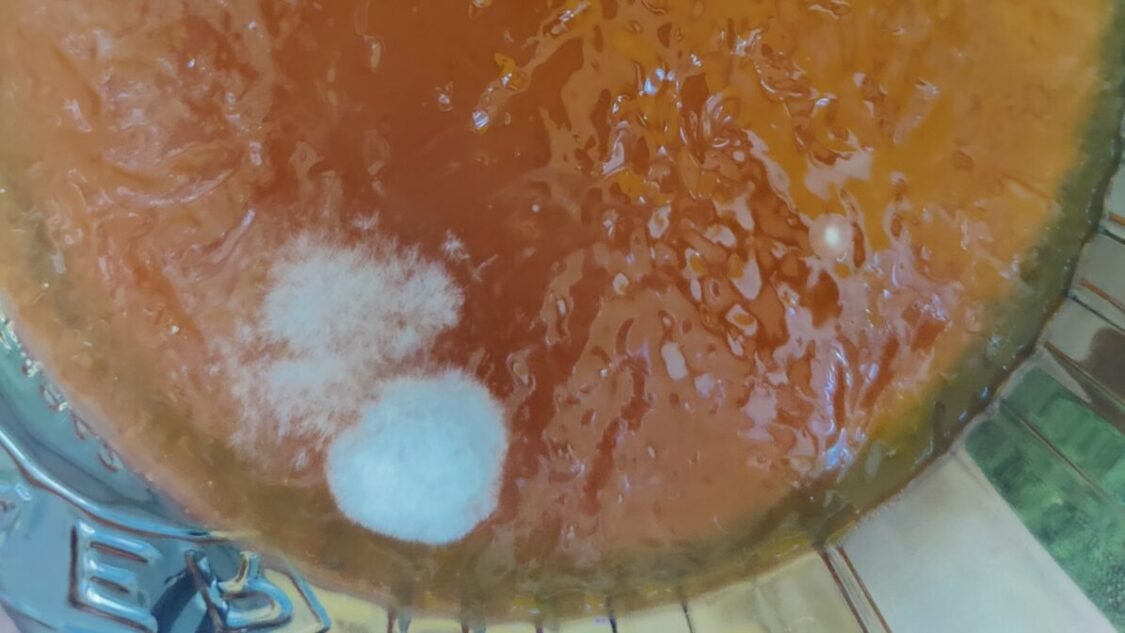
Yep, it’s mold-green mold on SCOBY
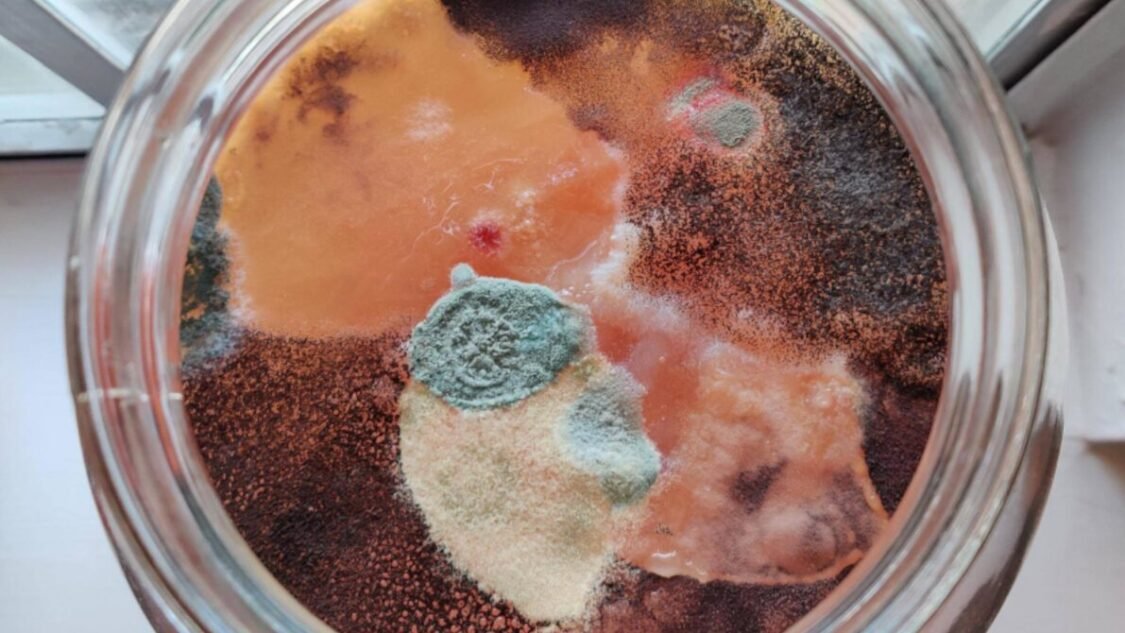
Funky looking mold in kombucha
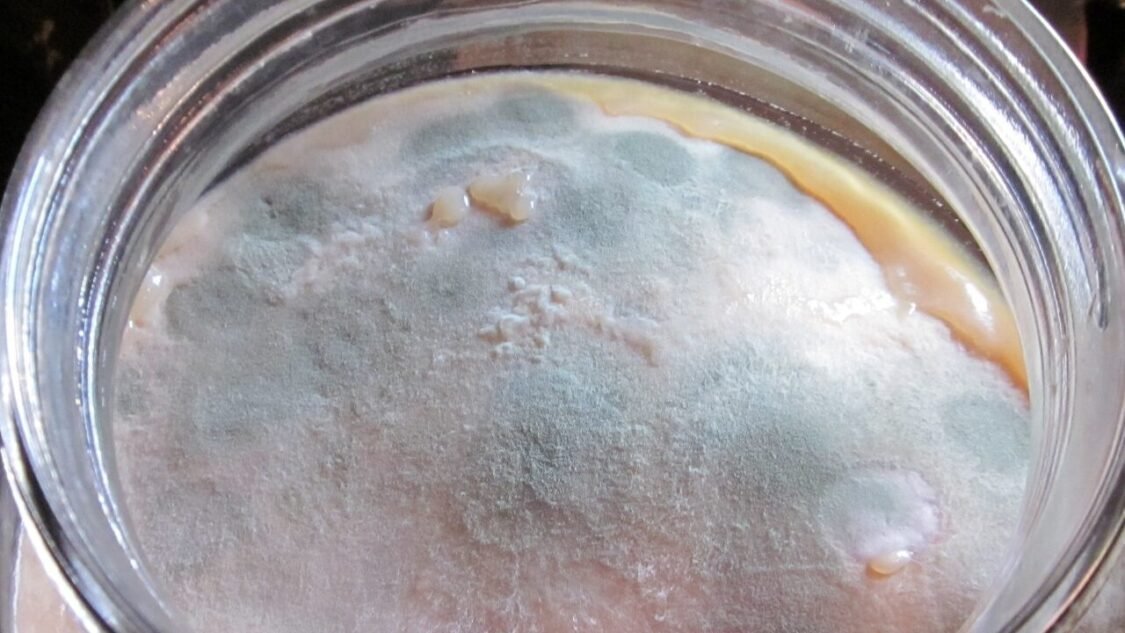
Large colony of mold on a very moldy SCOBY
Not Kombucha Mold Pictures

Rough looking SCOBY but not mold
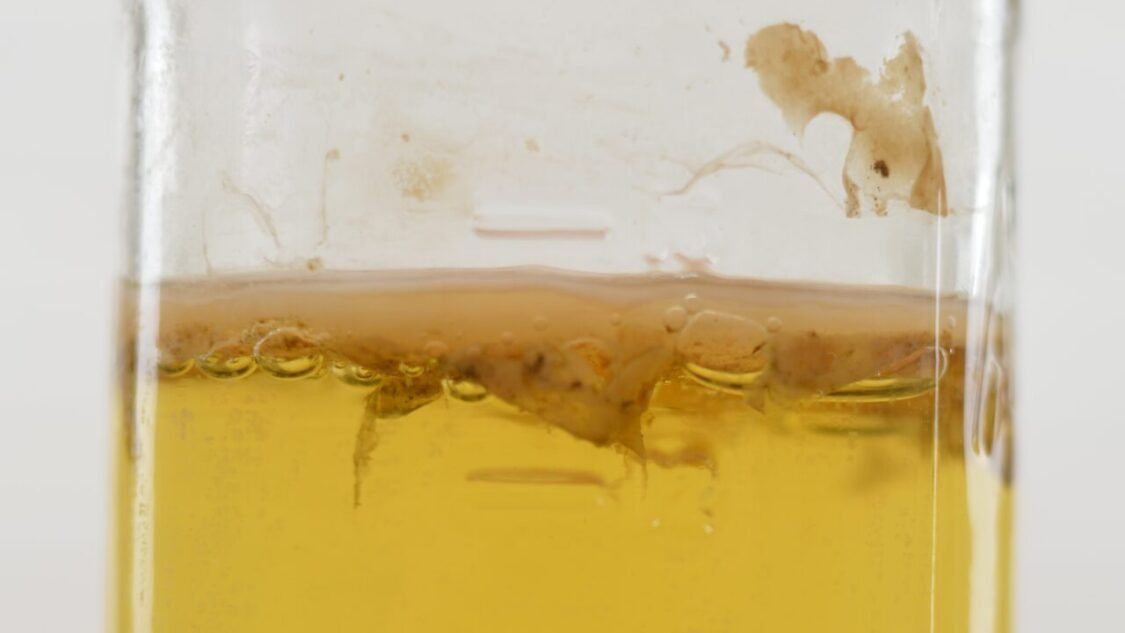
Strings of yeast in kombucha are not mold
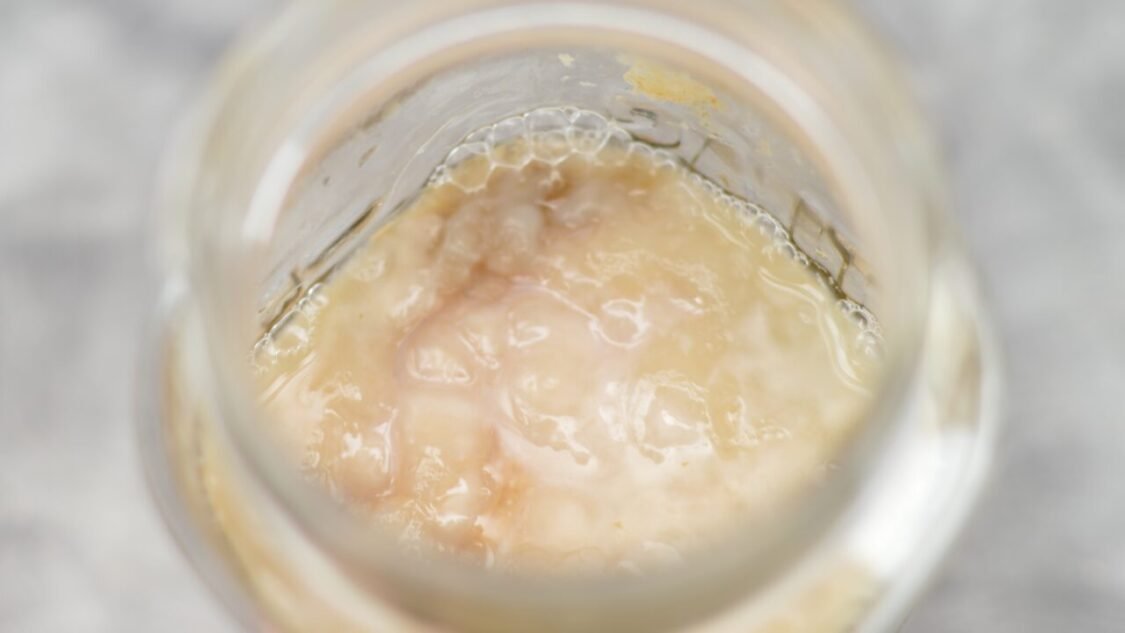
Another SCOBY, not mold
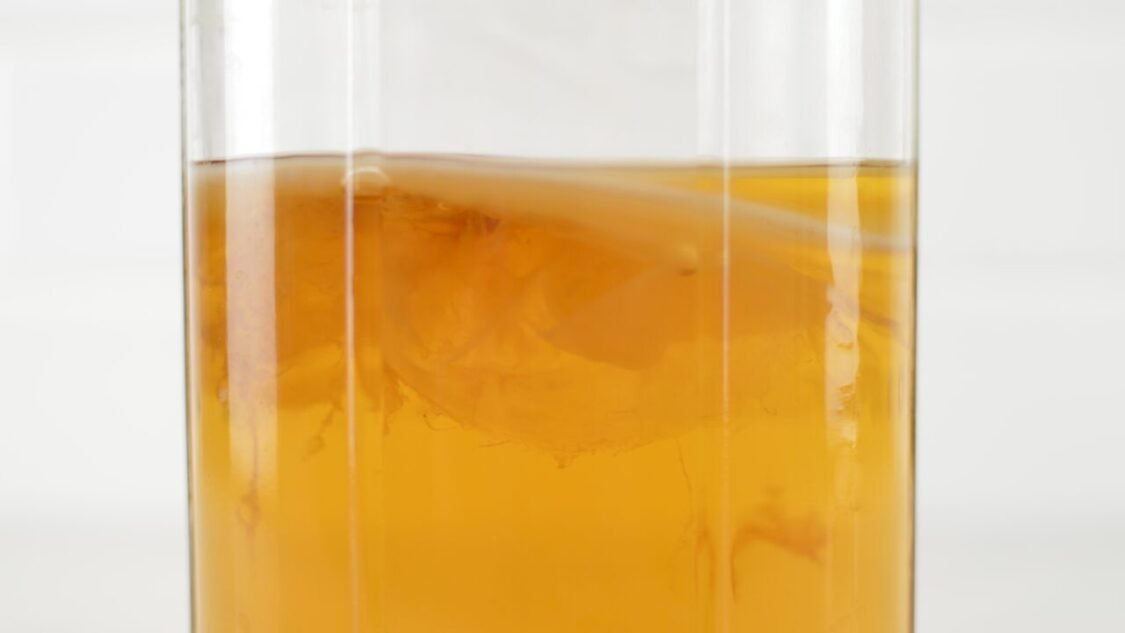
More yeast strings, not mold in kombucha
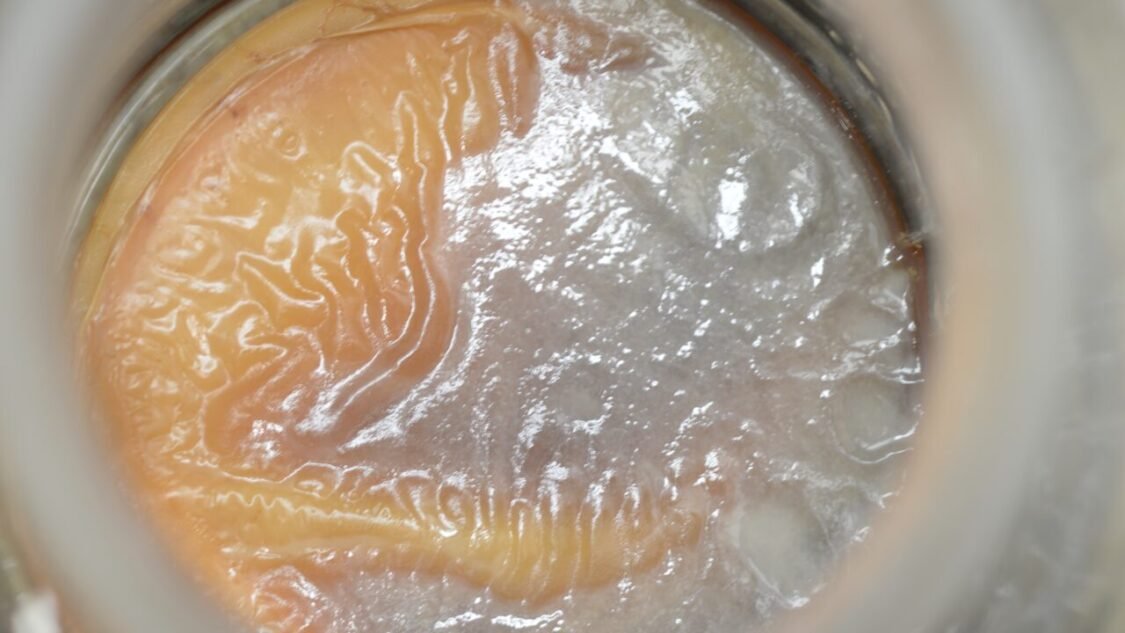
Discolored SCOBY but not mold
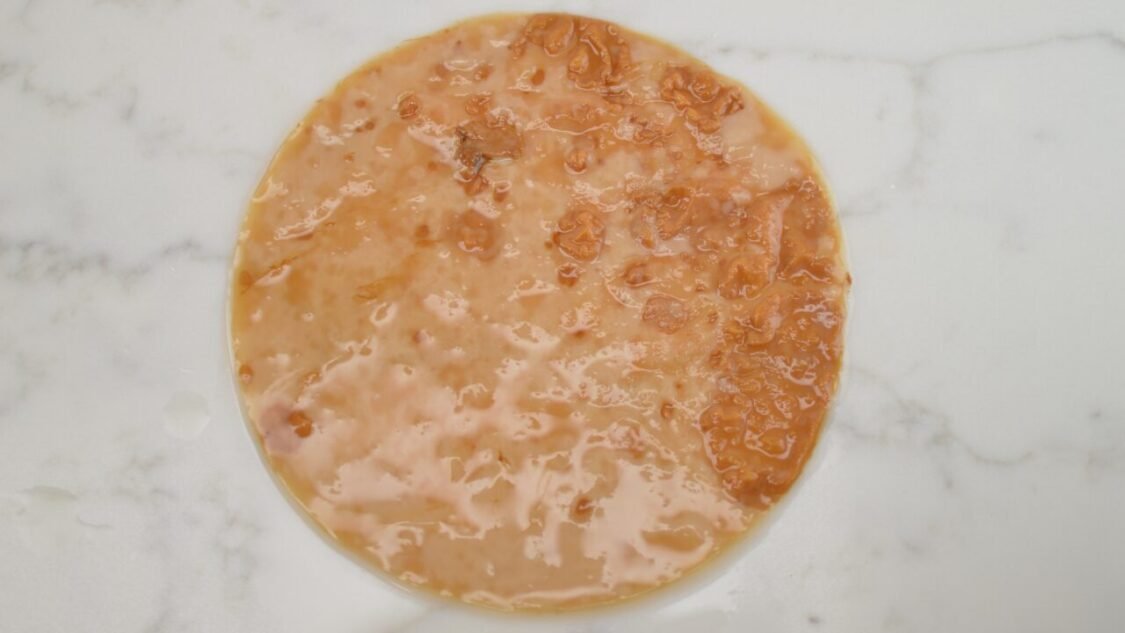
Another SCOBY with an uneven texture but not mold
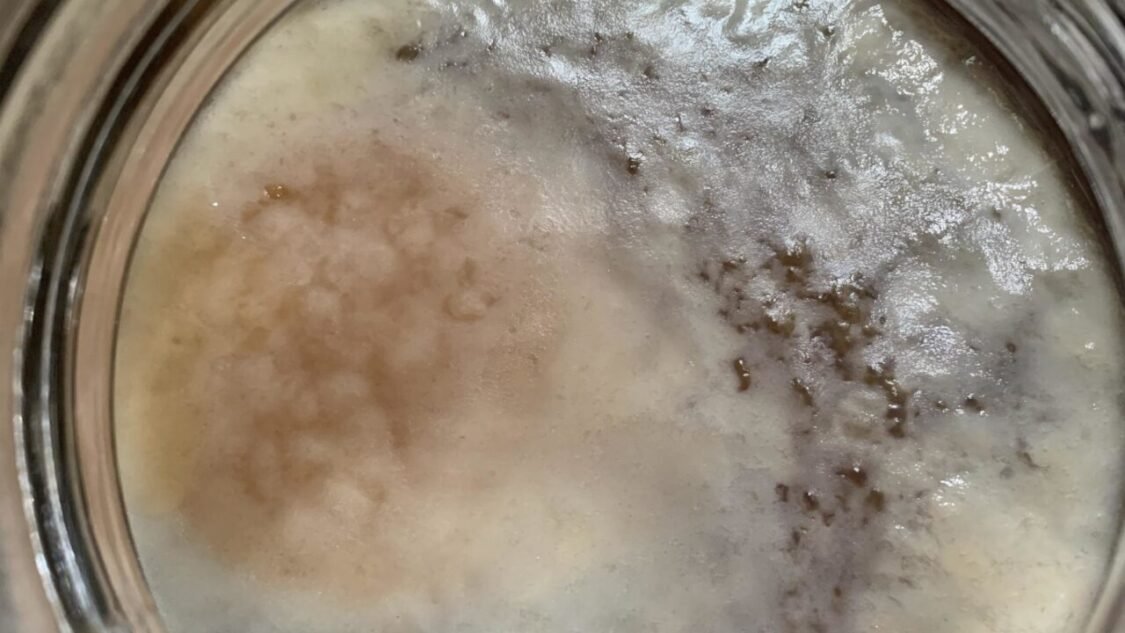
Irregular forming SCOBY no mold
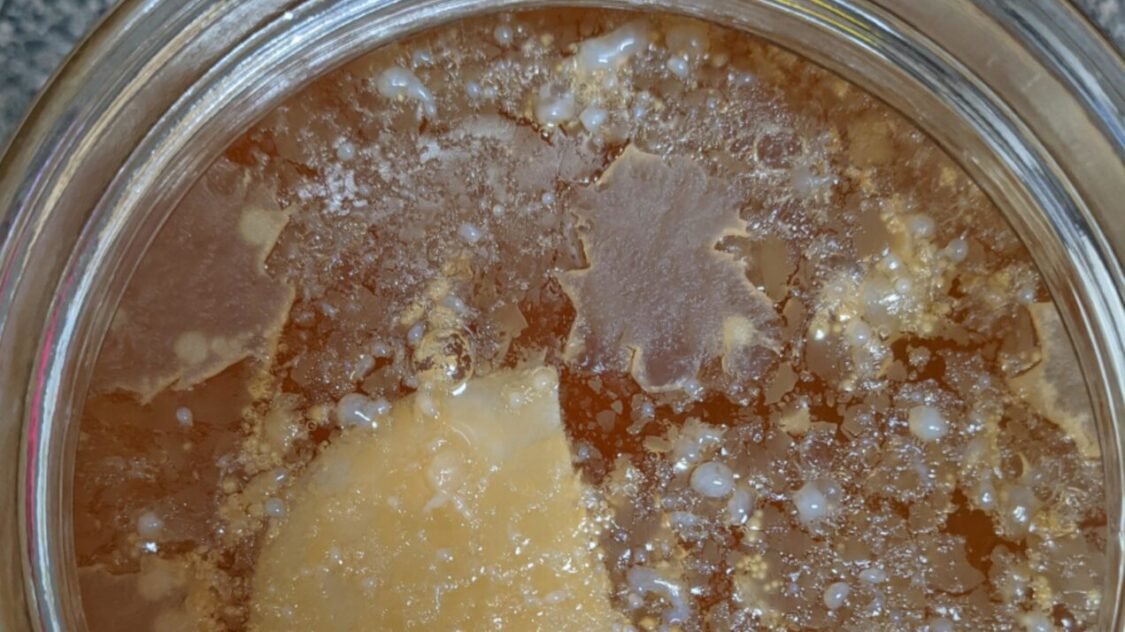
Young SCOBY forming on kombucha is not mold
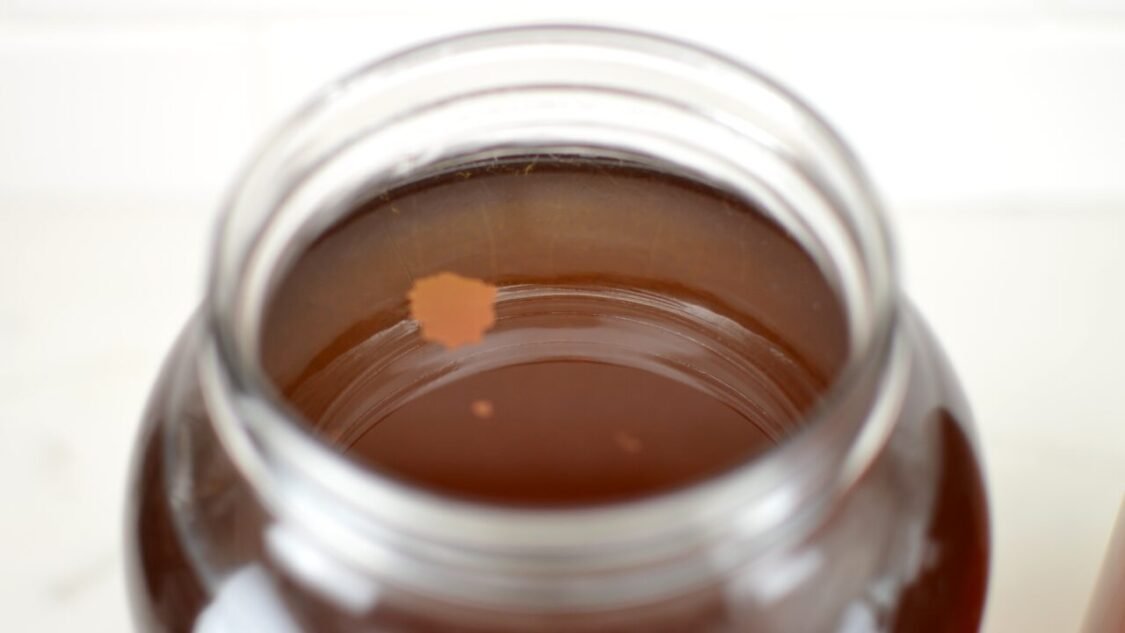
Suspicious floating blob is the beginning of a SCOBY forming, not mold
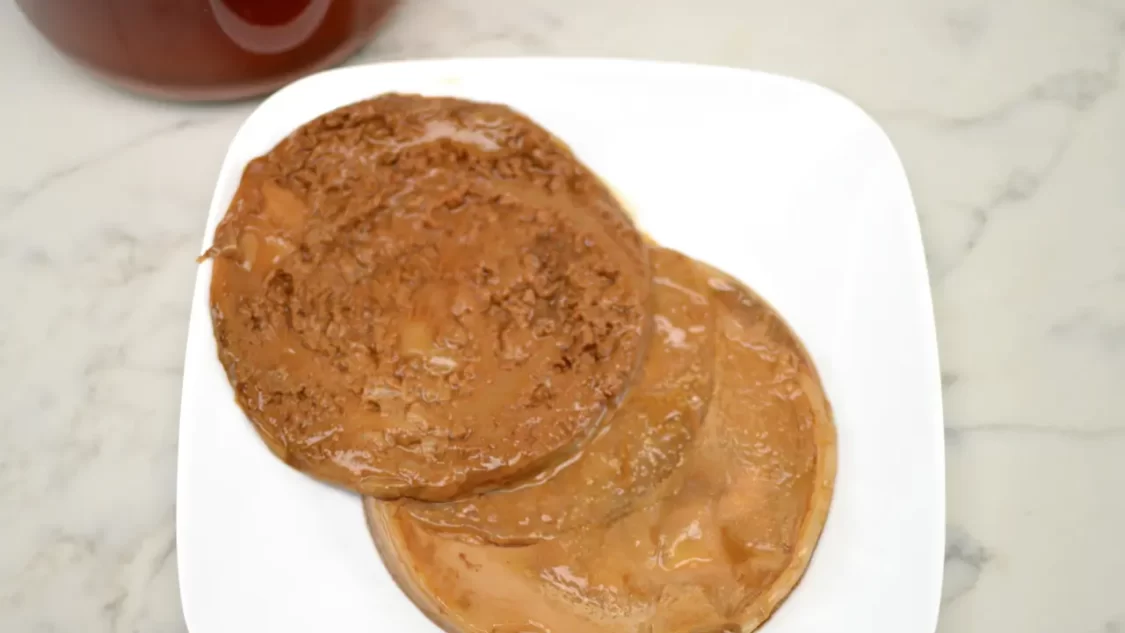
These SCOBYs from malt kombucha also don’t have mold
Kombucha SCOBY Color and Mold
As you can see from the gallery of kombucha mold images, there are many ways that you could mistake a healthy fermentation for one that has mold.
Many kombucha brewers will see a SCOBY that does not look “normal” or exactly like one from a previous batch. That does not necessarily mean that the SCOBY has mold. Often the tea used will affect the color of the SCOBY for instance:
- Black tea tea tends to give my kombucha SCOBY a very brown dark look.
- Green Teas tend to give my kombucha SCOBY a whiter look
- Black/Red Tea tend to give my kombucha SCOBY a yellowish tinge.
White Circles On Surface of SCOBY
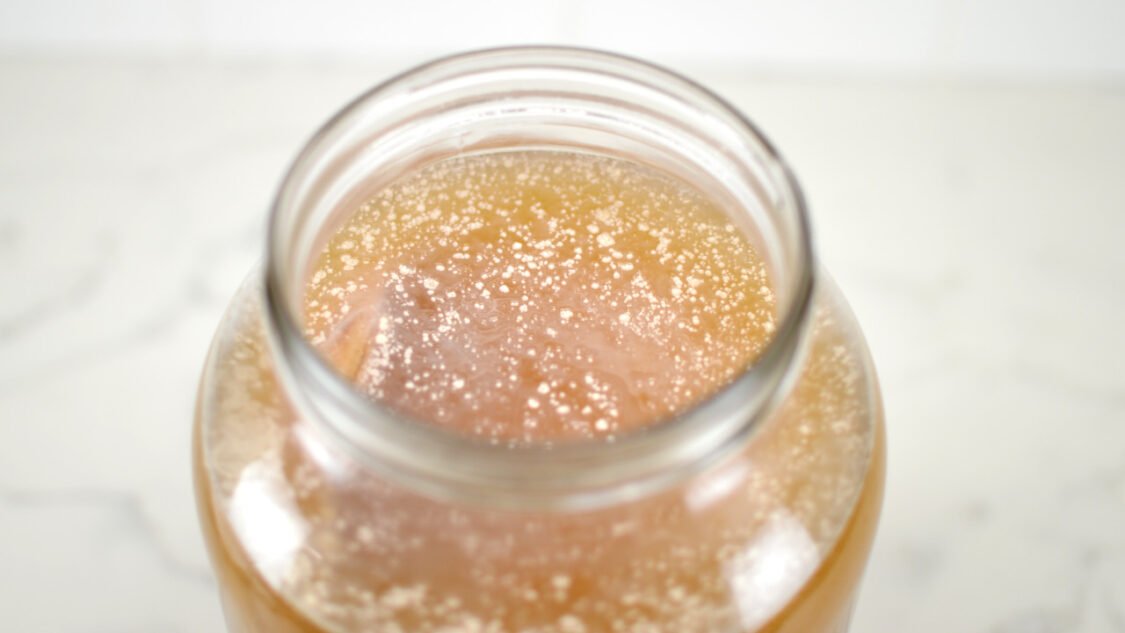
A batch of malt kombucha where I thought the a moldy SCOBY was forming and dumped out too soon
When a brand new SCOBY is forming at the top of your brew, and the old SCOBY is at the bottom of your bottle, the SCOBY formation at the top can look like it’s mold.
Fortunately it’s not mold on top of your brew — simply the formation of miniature SCOBYs on the top surface that will eventually link together forming a single SCOBY.
The above case happens when the SCOBY sinks to the bottom of your fermenter at the start of fermentation leaving the top surface to form a brand new SCOBY that’s not attached to your main SCOBY.
During fermentation the main SCOBY at the bottom may float to the top and merge with the new forming SCOBY or in some cases, the original SCOBY may stay at the bottom and you’ll end up with the new (baby) SCOBY floating on top, not attached to the original.
Translucent Slime on the Top Surface
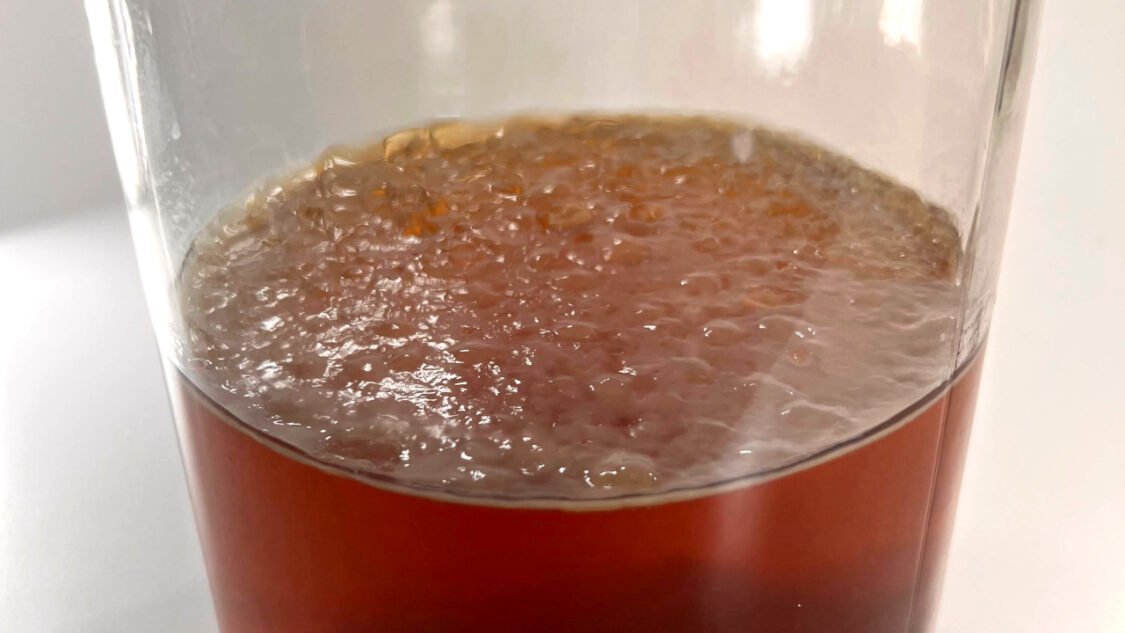
This is simply when the little SCOBYs have all emerged together. You will see a slimy coating on the very top layer of your brew that looks like mold on the kombucha tea.
This is natural and normal and not mold. Remember mold on kombucha is typically dry and fuzzy looking.
Wait a few days and this thin slime will turn into the actual SCOBY shape you are used to seeing , though it will be thin at first.
Dangling brown/white bites Underneath your SCOBY
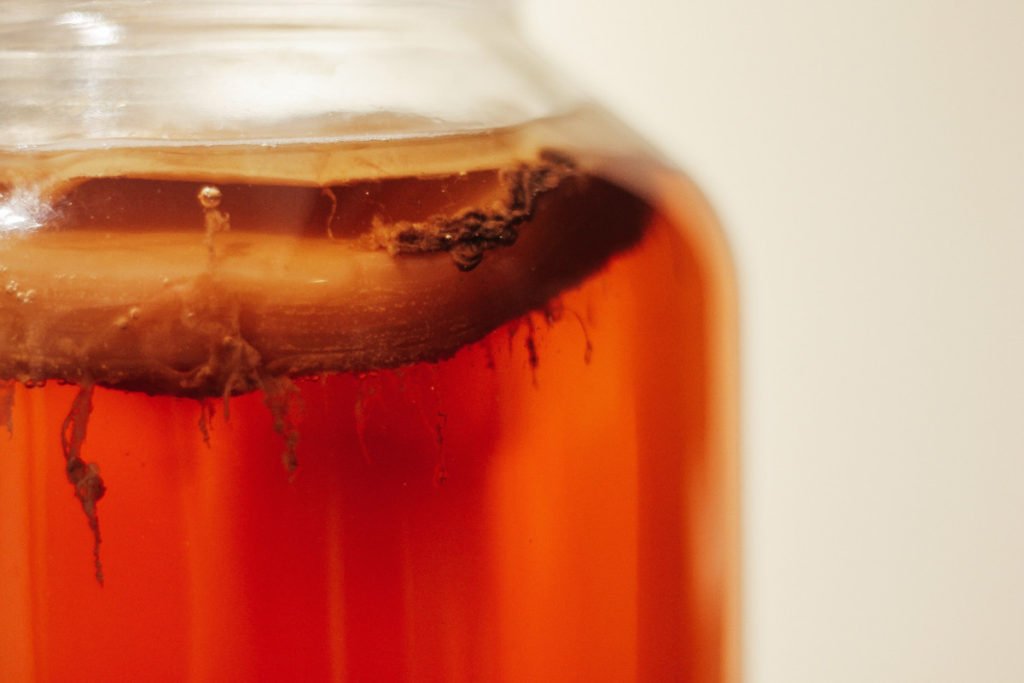
Another potential concern people often have is brown, yellow, or white strands hanging from beneath the SCOBY down into the kombucha. Many people misinterpret these strands as mold in their kombucha.
Relax, these strands are simply the yeast in the culture clumping together. They are a vital part of the healthy kombucha culture. Mold in kombucha will be found on top of the kombucha or on the SCOBY, it cannot grow in the kombucha; however there may be many mold spores in the liquid.
When you drink Kombucha, you will be drinking some of these yeasty bits anyways since each individual one is microscopic.
Not Sure if your kombucha has mold?
Sometimes it can be difficult to positively determine if mold is growing on your kombucha. After reviewing the information on this page if you are still unsure, try out Is it Mouldy.
Is it Mouldy is an AI Bot that has been trained to recognize kombucha mold, kahm yeast and healthy Kombucha SCOBYs.
Ugh, My kombucha has mold, now what?
Since fermenting kombucha and the SCOBY look weird under optimal fermentation conditions., unless you are positive your culture has mold, there is no harm in waiting a few more days to be sure it’s not undergoing a normal (but weird looking) stage of growth.
If it is mold on your kombucha it will persist and even grow. I have been too quick to throw out a batch of kombucha that I thought had mold.
Never attempt to salvage a moldy kombucha culture. I have unsuccessfully tried to remove mold from the top of the culture before the SCOBY formed and it came back (mold spores were in the liquid and carried forward to the next batch.)
When the SCOBY formed it also started to grow mold. I thought carefully discarding the SCOBY would eliminate the mold but it came back before the new SCOBY formed! The kombucha had a pungent, persistent moldy character that was unpleasant.
Throw away (or compost) your SCOBY and cultures and liquid from that jar. Even if you SCOBY does not appear to have mold, it is likely teeming with mold spores looking for the opportunity to start growing. Clean and sanitize everything and start over fresh by growing a new SCOBY or taking one from your SCOBY Hotel.
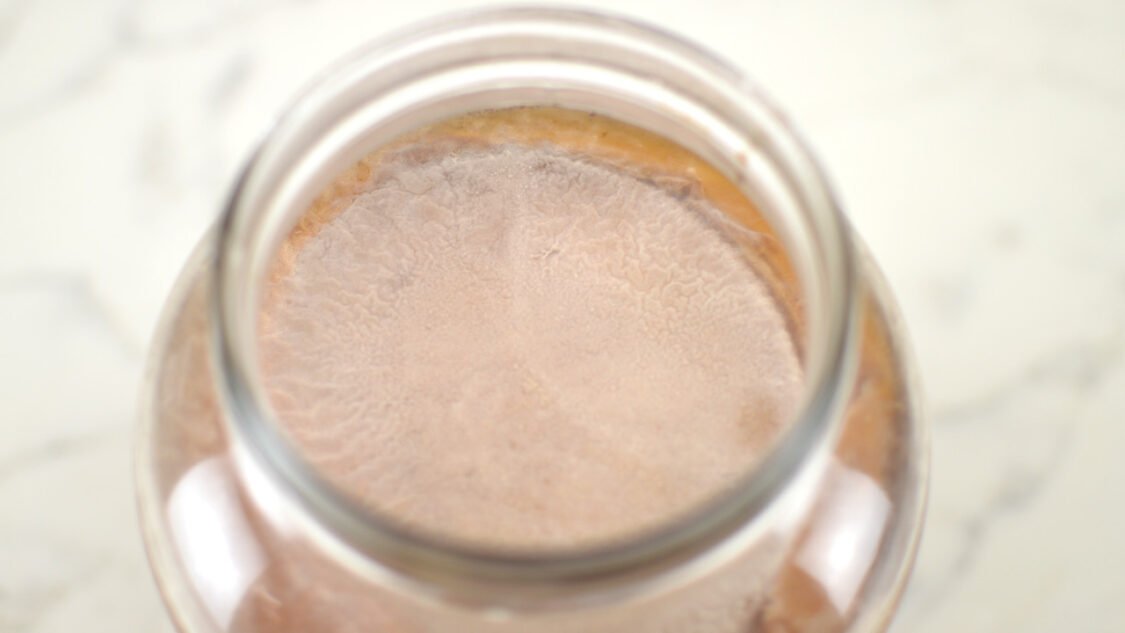
SCOBY mold on the surface of Malt Kombucha. Interestingly it never turned green and remained this tan color.
What Causes mold in Kombucha?
If you have followed the kombucha brewing instructions and ratios correctly by making your sweet tea, adding 10% starter tea from a previous batch and using a SCOBY it is very unlikely your kombucha will grow mold.
Mold most often forms in the following situations:
- Your fermenter cover is not fine enough, allowing mold spores to land in your kombucha. Course coverings, like some cheesecloths, will need to be double-layered to keep mold at bay.
- You did not use enough starter tea or the pH of the starter tea was too high which allowed mold to take hold in your kombucha before the fermentation process lowered the pH enough to act as a preservative
- It’s too cold where your kombucha is fermenting which results in a slower fermentation, giving mold time to get established in your kombucha.
- The humidity level is very high where you are fermenting your kombucha, restricting airflow and reducing oxygen needed for a healthy fermentation
How to prevent mold in kombucha
The standard recipe for Kombucha calls for 10% fermented kombucha (unflavored – like from a past batch) and 90% sweet tea. Use of the fermented kombuchas is key to not only jumpstarting the fermentation but also protects the culture from mold.
Finished kombucha has a pH of 2.5-3.5 which is low enough to create hostile environment to any unwanted microbes and mold. Addition of the already fermented, acidic kombucha inhibits the growth of foreign bacterial and mold until the entire fermenter is converted to young kombucha or when the mixture’s pH drops to 3.5 or below (typically after 3 days). It is normally during that approximately 3-day period that there is the potential for mold to grow.
Mold spores are invisible to the human eye and can remain dormant or survive in extreme conditions; therefore, it is never recommended to wash off the SCOBY in water or vinegar and attempt to re-use it. Additionally the liquid under the SCOBY (or mold) will also contain millions of spores and will re-infect the next batch it is used in.
To reiterate: if you do end up with mold, get rid of your SCOBY and liquid from that fermenter and start by growing a new SCOBY or one from your SCOBY Hotel and using kombucha that is known to be clean to seed your next batch.
Tips to prevent Kombucha Mold from recurring:
- Use starter liquid from your SCOBY Hotel, any very old Kombucha, or store bought unflavored kombucha. You can use pH test strips to ensure your starter kombucha is strong and acidic (should be between 2.5 and 3.5).
- If you don’t have old / strong starter liquid, use more of your regular starter per batch (15-20%)
- Keep the fermentation temperature warm and consistent, use a heating mat or other warming method during cold months. If the temperature gets too low, the good bacteria and yeast in the culture go dormant and stop working. This means the acidity of your kombucha won’t increase possibly allowing mold to grow (albeit slowly)
- Ensure proper cleaning and sanitization. In addition to cleaning everything thoroughly with hot soapy water, rinsing and using an acid sanitizer be sure to clean or replace the cover for your kombucha (tea-towel, paper towel, napkin, etc.)
- Don’t use cheesecloth as a cover, some cheesecloths are too course to prevent unwanted bacteria and mold from floating into the fermenting kombucha.
- Keep your fermenting kombucha separated from compost, houseplants, stale food and garbage
Helping you learn to brew kombucha, find inspiration for new kombucha flavors and use kombucha to make kombucha mocktails


